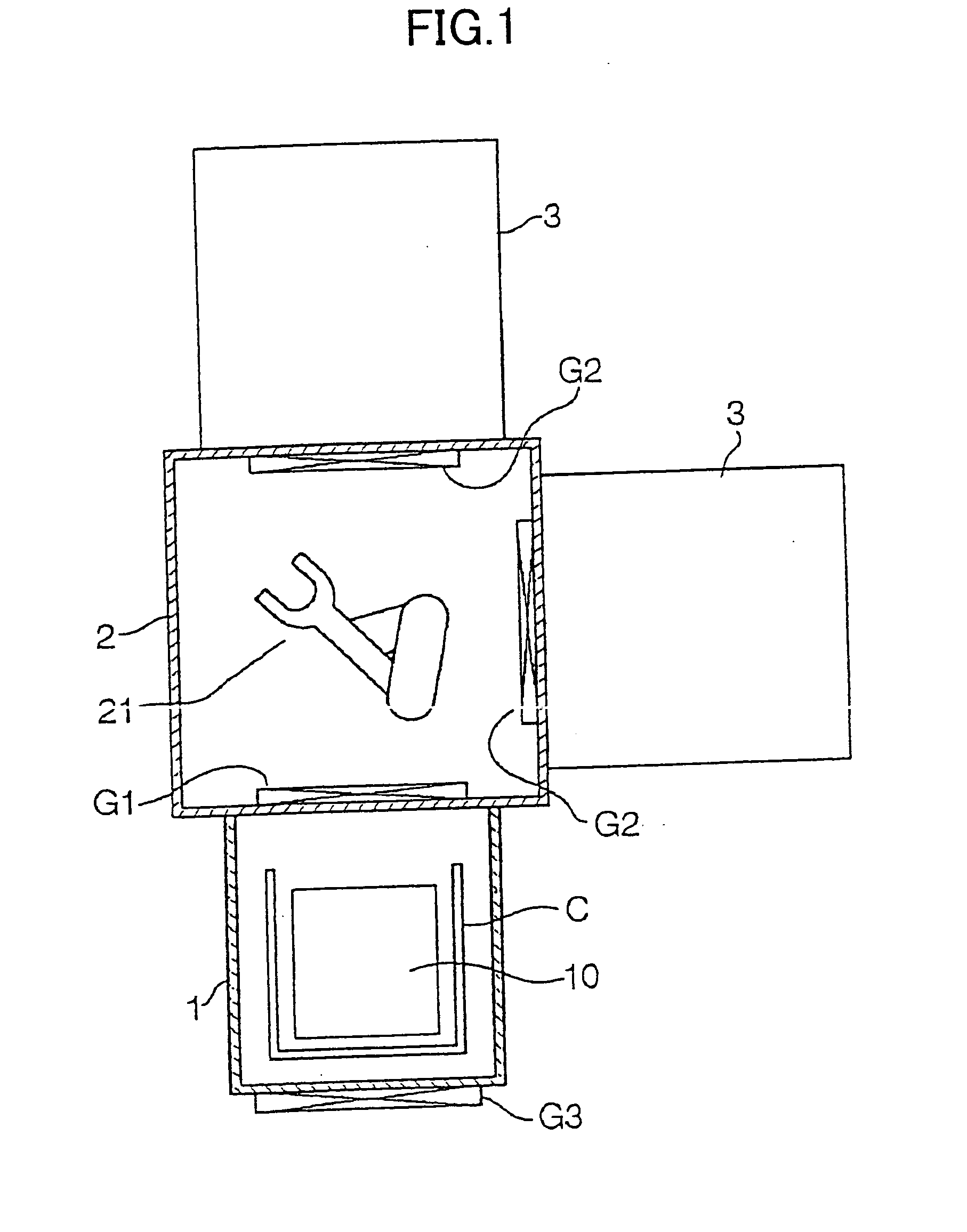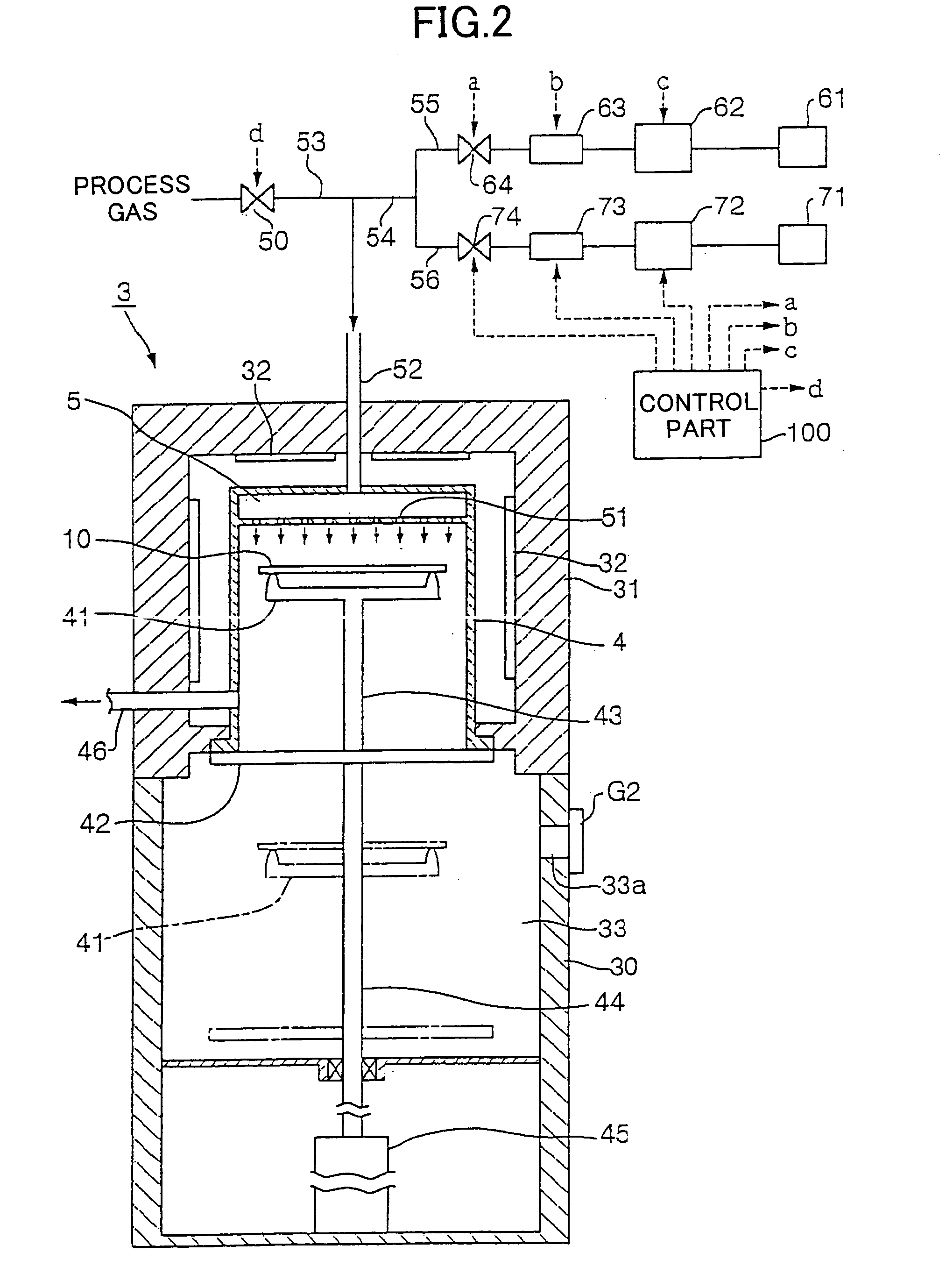Method and device for heat treatment
- Summary
- Abstract
- Description
- Claims
- Application Information
AI Technical Summary
Benefits of technology
Problems solved by technology
Method used
Image
Examples
first embodiment
[0020] FIG. 1 is a plan view showing an outline structure of a heat treatment apparatus according to the present invention. The heat treatment apparatus shown in FIG. 1 comprises a carrier chamber 1, a conveyance chamber 2, and a plurality of hot-wall type heat treatment units 3 (two units in the figure). The carrier chamber 1 and the conveyance chamber 2 are airtightly connected through a gate valve G1. Additionally, the conveyance chamber 1 and the heat treatment units 3 are connected through a gate valve G2, respectively.
[0021] The carrier chamber 1 is an airtight chamber for carrying in and out a carrier C, which is a convey tool for conveying a plurality of rectangular LCD substrates by retaining in a shelf-like state, between outside of the apparatus through a gate door G3. The conveyance chamber 2 provides a convey means 21 which comprises a multi-joint arm. The convey means 21 is constituted so that the LCD substrates 10 can be delivered between the carrier C in the carrier ...
third embodiment
[0042] FIG. 6 is a diagram showing the present invention. In this embodiment, an amount of heat exchange gas sufficient for one time heat exchange is accumulated in each of the gas-supply pipe 55 for the first heat exchange gas and the gas-supply pipe 56 for the second heat exchange gas. Moreover, for example, tanks 60 and 70 equipped with a temperature control part and valves 65, 66, 75 and 76 are provided. The capacity and internal pressure of the tanks 60 and 70 and the supply flows of the first and second heat exchange gas is set in accordance with a balance between an evacuation capacity of an exhaust pump which is connected to the exhaust pipe 46 and not illustrated, and a pressure inside the reaction container 4 at the time of start of heat exchange (start of heating or cooling).
[0043] In this example, when supplying the first heat exchange gas (second heat exchange gas) to the reaction container 4, after opening the valves 64 and 66 (74, 76) and completing a heat exchange, a...
PUM
| Property | Measurement | Unit |
|---|---|---|
| Temperature | aaaaa | aaaaa |
Abstract
Description
Claims
Application Information
 Login to View More
Login to View More - R&D
- Intellectual Property
- Life Sciences
- Materials
- Tech Scout
- Unparalleled Data Quality
- Higher Quality Content
- 60% Fewer Hallucinations
Browse by: Latest US Patents, China's latest patents, Technical Efficacy Thesaurus, Application Domain, Technology Topic, Popular Technical Reports.
© 2025 PatSnap. All rights reserved.Legal|Privacy policy|Modern Slavery Act Transparency Statement|Sitemap|About US| Contact US: help@patsnap.com



